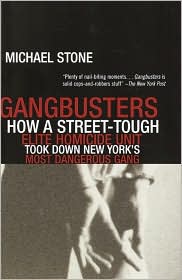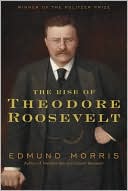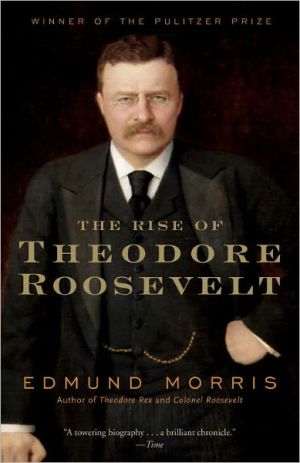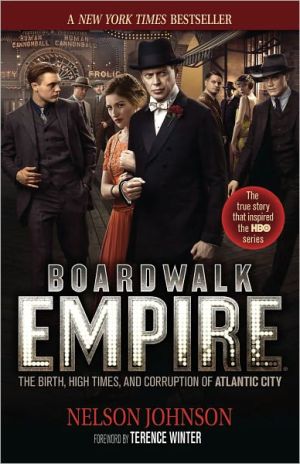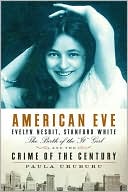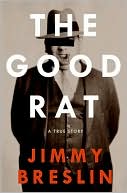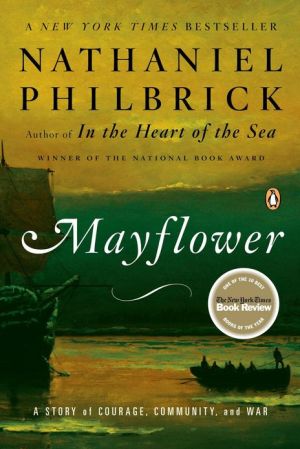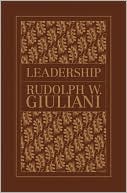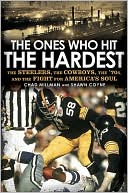Gangbusters: How a Street-Tough, Elite Homicide Unit Took Down New York's Most Dangerous Gang
An elite homicide investigation unit takes on one of the most savage and destructive gangs in New York City history in this gritty true-crime narrative.\ The investigation into the late-night murder of a college student on the West Side Highway leads to the Wild Cowboys, a group of young men who for years terrorized Upper Manhattan and the Bronx while running a $30,000-a-day drug business. What follows is a tale of dogged pursuit that offers a fascinating inside look at the workings of a...
Search in google:
An elite homicide investigation unit takes on one of the most savage and destructive gangs in New York City history in this gritty true-crime narrative.The investigation into the late-night murder of a college student on the West Side Highway leads to the Wild Cowboys, a group of young men who for years terrorized Upper Manhattan and the Bronx while running a $30,000-a-day drug business. What follows is a tale of dogged pursuit that offers a fascinating inside look at the workings of a complex police investigation, and a satisfying account of how a city took back its streets. Publishers Weekly Stone, a contributor to New York magazine, offers an efficient, intimate look back at the urban crack wars, recounting the bloody reign and difficult takedown of a vicious Dominican drug gang operating in upper Manhattan and the Bronx. He realistically evokes a time when NYC homicide investigators were swamped with murder cases. To target gang leaders, rather than making street-level arrests (which created good statistics but had little lasting effect on crime), Manhattan's Homicide Investigation Unit was formed. The unit became aware of "Lenny's Boys" (a gang also known as the Wild Cowboys or Red-Top) committing such atrocities as the machine-gunning of a suburban kid driving on the West Side Highway and the brutal killing of four customers and dealers at a rival crack spot. The investigation, which Stone traces in detail (he was given special access to the HIU), took years, revealing a battered urban neighborhood enslaved by arrogant, trigger-happy dealers who had created byzantine gang structures and assembly-line distribution methods meant to foil efforts at prosecution. Ultimately, however, eight defendants received lengthy sentences; many collaborators (including the gang's leaders, Lenny and Nelson Sepulveda) testified for plea bargains. Stone has a good grasp of the urban milieu and he captures the human qualities of dedicated cops as well as remorseless thugs. Robert Jackall's 1997 Wild Cowboys offers a more thoughtful if scholarly take than does Stone's account, with its movie-ready excitement and fuller character portraits. But overall, Stone presents a solid retelling of a frightening, significant era in New York's recent history. (Sept.) Copyright 2000 Cahners Business Information.\|
\ From Barnes & NobleThe Wild Cowboys weren't cowboys; they were thugs. In the early nineties, this drug gang ruled the South Bronx and parts of upper Manhattan with obscene self-confidence and viciousness. When they weren't peddling crack in school neighborhoods or sniping from roof tops, they were punishing members o other gangs or executing rival dealers. It was only after they savagely offered a Tarrytown, New York, college student on the West Side Highway that the Wild Cowboys overdrew their hand. This story tells how members of New York's elite Homicide Investigations Unit broke the back of this largely & deadly gang, arresting scores of their members. Retentive booksellers might remember that this story was rendered (in a more scholarly, less exciting way) in Robert Jackall's Wild Cowboys. Worth a fistful of whodunits.\ \ \ \ \ Publishers Weekly - Publisher's Weekly\ Stone, a contributor to New York magazine, offers an efficient, intimate look back at the urban crack wars, recounting the bloody reign and difficult takedown of a vicious Dominican drug gang operating in upper Manhattan and the Bronx. He realistically evokes a time when NYC homicide investigators were swamped with murder cases. To target gang leaders, rather than making street-level arrests (which created good statistics but had little lasting effect on crime), Manhattan's Homicide Investigation Unit was formed. The unit became aware of "Lenny's Boys" (a gang also known as the Wild Cowboys or Red-Top) committing such atrocities as the machine-gunning of a suburban kid driving on the West Side Highway and the brutal killing of four customers and dealers at a rival crack spot. The investigation, which Stone traces in detail (he was given special access to the HIU), took years, revealing a battered urban neighborhood enslaved by arrogant, trigger-happy dealers who had created byzantine gang structures and assembly-line distribution methods meant to foil efforts at prosecution. Ultimately, however, eight defendants received lengthy sentences; many collaborators (including the gang's leaders, Lenny and Nelson Sepulveda) testified for plea bargains. Stone has a good grasp of the urban milieu and he captures the human qualities of dedicated cops as well as remorseless thugs. Robert Jackall's 1997 Wild Cowboys offers a more thoughtful if scholarly take than does Stone's account, with its movie-ready excitement and fuller character portraits. But overall, Stone presents a solid retelling of a frightening, significant era in New York's recent history. (Sept.) Copyright 2000 Cahners Business Information.\|\ \ \ Library JournalThis is an intense, dizzying depiction of the brutality of drug gangs and the relentless efforts of New York's Homicide Investigations Unit (HIU) to combat them. The HIU, which comprises both prosecutors and detectives, was organized specifically to put gangs out of business. The unit spent many long and exhausting years trying to bust the "Wild Cowboys," the city's "most dangerous gang"--a case it ultimately won. Journalist Stone (New York magazine) details many of the political and personnel strains the unit faced as a result of the arduous investigation, occasionally reporting too many of these real-life heroes' flaws. The author's journalist roots are evident in his strong writing, but the book too often reads like a series of articles. Stone likes to foreshadow events but often does so frustratingly early. The story is complex and covers so many people that it is difficult to follow at times, though the published book will have a list of characters, which should help. Not for the squeamish; the graphic and senseless homicides depicted are so many that the reader quickly becomes inured to the violence. Recommended for true-crime collections.--Karen Sandlin Silverman, Ctr. for Applied Research, Philadelphia Copyright 2000 Cahners Business Information.\ \ \ \ \ William J. Bratton...a riveting new book by veteran New York journalist Michael Stone...The average reader will come away from this book with an appreciation of just how complex and difficult a job the criminal justice system has in attempting to investigate and prosecute the incredible disorganized, incongruous and often spontaneous world occumpied by the crack-cocaine gangs.\ —New York Observer\ \ \ \ \ Kirkus ReviewsA murder investigation becomes a large-scale assault on drug gangs in this painstaking first book by New York City journalist Stone.\ \
